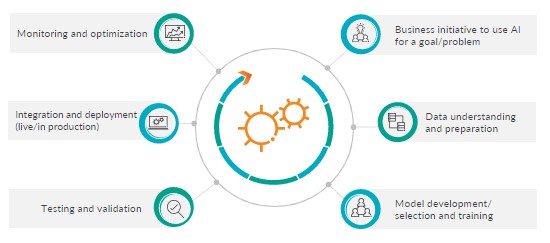Artificial Intelligence (AI) has emerged as a transformative force across industries as AI systems are being rapidly developed and deployed. As businesses attempt to harness the potential of AI to innovate new processes and enhance existing ones, there is a growing need among businesses to consider how these technologies should be governed to ensure they are designed, developed, deployed and used responsibly. From a legal perspective, AI governance – from transparency and data quality to privacy and algorithm design – raises many complex issues that need to be addressed.
Prioritizing transparency to ensure accountability
Without transparency around how AI systems work and make decisions, it will be impossible to properly govern these technologies or ensure they align with ethical and social mores and values. When AI systems make consequential decisions, the reasoning behind those decisions must be explainable and auditable. Otherwise, it becomes impossible to hold the right stakeholders accountable if harm occurs, which can have potentially devastating consequences for an organization’s reputation. Comprehensive transparency requirements can trace accountability across the full AI lifecycle – from developers building the models, to companies deploying AI to regulators providing oversight.
Transparency also supports effective oversight by an organization and its stakeholders. Auditing AI systems allows an organization to assess factors like data quality, algorithmic bias and model robustness. Access to key technical details through transparency requirements enables proactive governance to identify and mitigate risks early in the AI deployment process. Without such transparency, governance is reduced to reactive crisis management when problems inevitably occur.
Transparency builds public trust and confidence in AI by dispelling notions of “black box” systems. Individuals impacted by AI systems have a right to understand why outcomes were rendered. Understanding the strengths and limitations of AI builds confidence that its risks are being properly managed. Opacity breeds mistrust; transparency enables people to see AI is being developed ethically and deployed safely. Responsible AI developers should consider engineering explainability directly into their models.
Ensuring the quality and privacy of data
Data quality is a keystone for AI governance. For AI to produce insightful and reliable outcomes, the data input into this emerging technology needs to be accurate and relevant. No amount of algorithmic finesse can overcome low-quality training data. Data governance is thus an urgent priority from both legal and ethical considerations. Once a data inventory has been built, categorizing data will allow you to empower informed decision-making. Clean and accurately labeled data empowers AI models to recognize patterns, anticipate trends and offer insights that fuel strategic decisions. In this context, data quality translates directly into business success.
There are complex legal questions related to data privacy when AI systems utilize massive datasets, including personal information, to train their algorithms. What types of data require consent to use? How can personal data be protected from exploitation? How is privacy regulated when data crosses borders? These issues are already creating discussions among regulators and policymakers. In the European Union, the Artificial Intelligence Act is the subject of comprehensive political negotiations as it progresses through the legislative process. is the subject of comprehensive political negotiations as it progresses through the legislative process.
To embark on a successful journey of AI integration within any organization, IT departments and chief compliance officers should begin by compiling an exhaustive list of all products, features and processes that leverage AI. This comprehensive inventory forms the foundation upon which legal and privacy risk management strategies will be built. Leveraging existing data maps or inventories and identifying personal data that AI systems will process is critical to ensuring that data privacy is considered. By uncovering data sources, patterns and connections, organizations can ascertain how AI systems will interact with different types of data.
Identifying and mitigating bias
Another central concern is bias. Historical training data may reflect existing prejudices in society, encoding discriminatory associations directly into machine learning models. Human developers can also inadvertently introduce their own biased judgments into algorithm design choices and data labeling. Unfortunately, bias can be difficult to recognize during development cycles. And once deployed at scale, biased AI tends to amplify rather than mitigate historical inequities. This raises both ethical and legal questions about discrimination and the violation of human rights. From a legal perspective, biased AI may lead to claims of disparate impact under equal protection laws. Impacted groups could argue discriminatory treatment even if bias was unintentional. The onus falls on organizations to be proactive about bias testing before launching AI systems.
To detect and resolve biased AI, transparency is essential but not sufficient. Developers must audit algorithms and training data to uncover hidden biases and understand how they arose. However, auditing alone will not necessarily fix all threats of bias. A thoughtful AI governance framework is needed to provide guidance and oversight for improving the entire development lifecycle.
Navigating the shifting landscape of AI regulations
AI governance is still an emerging policy area, with new laws and regulations being actively drafted and adopted worldwide. By closely following worldwide initiatives and monitoring regulatory changes, a company can remain compliant. In addition, implementing an AI governance framework with the flexibility to adapt as regulations shift provides a foundation for forward-facing compliance. The core tenets of transparency, accountability and ethics should remain anchors, but methodologies will need to evolve alongside regulations.
Becoming familiar with AI governance and staying up-to-date with legislative updates is essential in the rapidly evolving technological and regulatory landscape. Here are tips to stay informed and knowledgeable:
- Understand the basics of AI, including large language models. There are online courses available that will give you a foundational knowledge of this emerging technology.
- Stay up to date on technological advances in the AI field by subscribing to newsletters, such as the AI News Digest.
- Keep an eye on regulatory developments related to AI governance, such as privacy laws, data protection regulations and AI ethics guidelines set by governments and industry bodies.
AI governance is a monumental challenge, with many open questions and high stakes. As AI becomes more advanced and integrated into our lives, implementing a governance framework with proactive legal perspectives will be crucial in minimizing risk to an organization.
Neither Robert Half nor Protiviti is a law firm and does not provide legal representation. Robert Half project attorneys and Protiviti professionals do not constitute a law firm among themselves. Organizations should consult with their own legal counsel for guidance based on their unique circumstances.
To learn more about our AI solutions, contact us.








